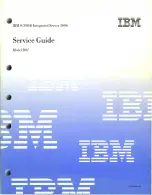
USB3.0/eSATA/1394b-to-SATA II RAID Subsystem
Quick Setup Guide
17
Chapter 3 Configuration Utility
The subsystem has a setup configuration utility containing important information
about the configuration as well as settings for various optional functions in the
subsystem. This chapter explains how to use and make changes to the setup utility.
Configuration Method
The RAID subsystem can be configured using the Application Program provided with
the subsystem. There are three versions: Microsoft Windows version, Linux version,
and Mac OS version.
IMPORTANT: The RAID subsystem must be connected to the Host
system in order to configure the RAID subsystem. If the RAID
subsystem is not connected to the Host system, the Application
Program will show “No disks or RAID!”
NOTE: At least one disk drive must be inserted in the RAID
subsystem. If there is no disk drive in the RAID subsystem, the
Application Program will show “No disks or RAID!”
IMPORTANT: When hard disks are inserted in the disk slots, the
first inserted hard disk is assigned “Port 0”. Port 0 is the (in-band)
channel that will be used by AP to manage the RAID controller.
Other hard disks will be assigned Port1, Port 2, etc. If the first
hard disk assigned as Port 0 is removed, the AP cannot access and
manage the RAID controller. When a RAID Set is already created,
the first hard disk that was inserted and assigned Port 0 (whether
or not it is part of the RAID Set) can then be removed and the AP
can still manage the RAID controller.
















































